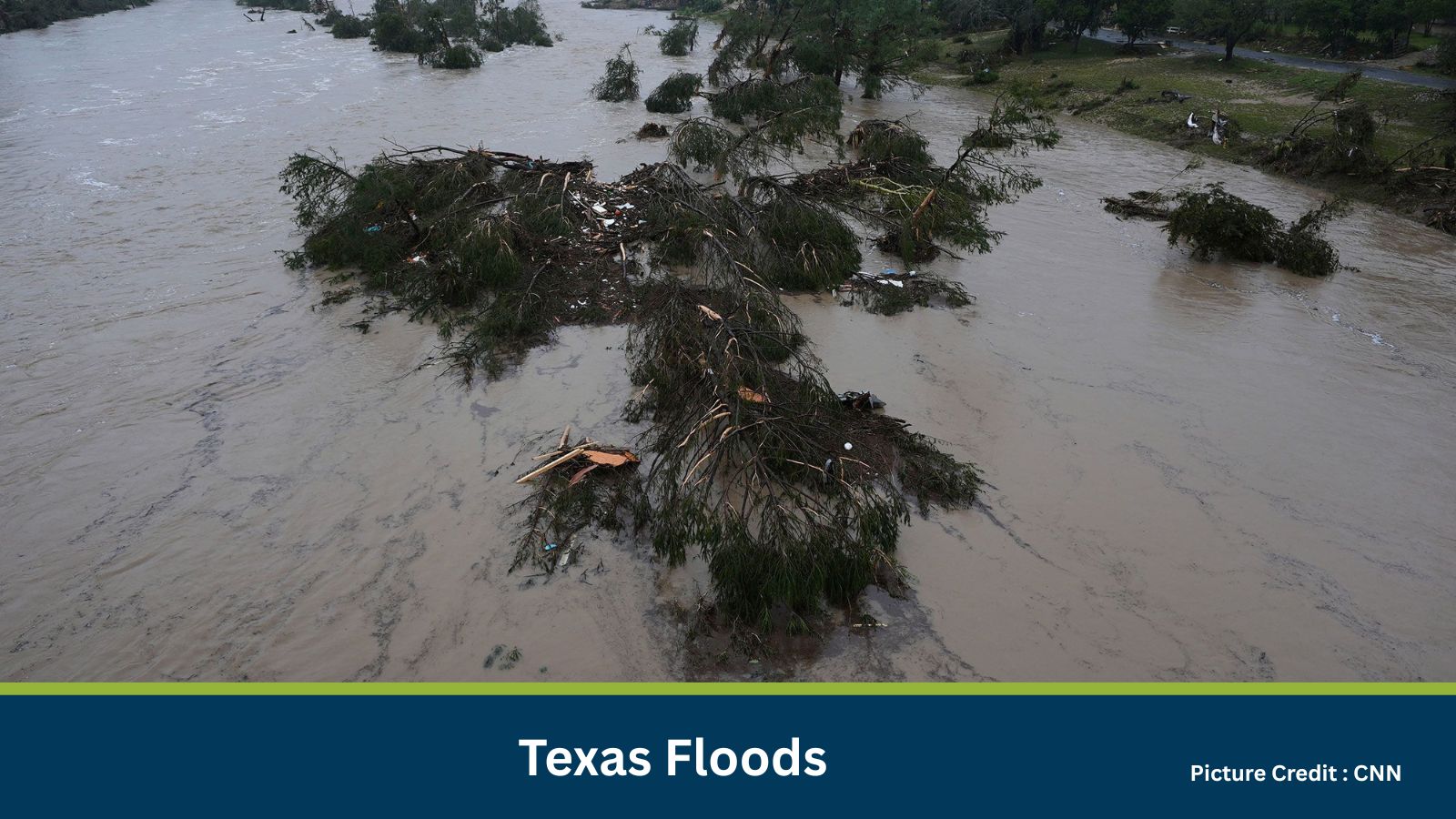Locations Affected: United States
This high-impact risk report covers the extensive flooding event across Texas as of 09 July 2025. With over 100 lives lost and critical infrastructure damage reported, this disaster has triggered widespread mobility, logistics, and business disruption. The assessment outlines emergency response needs, stakeholder risk mitigation measures, and long-term implications for continuity planners, emergency responders, and infrastructure authorities.
Introduction
Texas is currently grappling with severe flooding affecting multiple counties, including Williamson, Travis, Tom Green, Kerr, and others. This natural disaster has overwhelmed critical services and transport routes. The scale of this crisis echoes past catastrophic events such as the 2015 Central Texas floods.
What is Risk Analysis in the Context of Major Flooding?
Major floods disrupt essential systems, threaten lives, paralyze infrastructure, and delay business and government functions. This risk assessment framework helps organizations anticipate secondary disruptions, safeguard critical operations, and maintain resilience in the face of cascading failures.
Executive Summary: High Risk Level
- Date of Incident: 09 July 2025
- Location: Williamson, Tom Green, Travis, Kendall, Burnet, Kerr Counties, Texas, United States
- Risk Category: Natural Disasters
- Severity Score: 4/5
- Confidence Level: 90%
Widespread floods across Texas have already caused over 100 deaths. Critical roadways, airports, power infrastructure, and supply routes are disrupted. Floodwaters are expected to recede slowly, with recovery taking weeks. Business operations, safety, and logistics are significantly compromised.
Known Hotspots and Sensitive Areas
• Houston Ship Channel and Port of Houston
• I-10, I-35, I-45 corridors
• Dallas-Fort Worth Metroplex, Texas Medical Center
• Petrochemical zones along the Texas Gulf Coast
• Austin–San Antonio transport axis
Impact on Transportation and Services
- Roads: Major arterial roads and interstate highways across Texas, particularly in low-lying and urban flood-prone areas, are experiencing significant closures. Historically, these include sections of I-10, I-45, and US-59/I-69 in the Greater Houston Area, as well as I-35 connecting major cities like Austin and San Antonio, which are highly susceptible to inundation during heavy rainfall.
- Airports: Air transport at major hubs like George Bush Intercontinental Airport (IAH) and Dallas/Fort Worth International Airport (DFW) can experience delays and cancellations. Freight rail operations, particularly on major lines operated by BNSF and Union Pacific crossing the affected regions, face severe disruptions due to washed-out tracks or submerged rail yards. Maritime shipping via the Port of Houston is also subject to delays and operational curtailment due to channel closures or facility damage.
- Utilities: Widespread power outages impacting thousands are expected across the ERCOT grid. Water treatment plants and pumping stations, especially in low-lying areas, are vulnerable to inundation and operational failure, leading to contaminated or interrupted water supply. Natural gas pipelines and distribution networks can also be compromised, leading to service interruptions and potential safety hazards.
Recommended Actions
- Launch an internal emergency communication platform (SMS/email/portal) for updates.
- Relocate high-value equipment from low-lying facilities.
- Divert supply routes and liaise with alternative vendors.
- Back up enterprise data off-site and scale up remote access capabilities.
- Issue public-facing updates on operational delays and restoration timelines.
- Coordinate with regional emergency management (TDEM, TxDOT).
Emergency Contacts
- National Emergency: 911
- Texas Division of Emergency Management (TDEM): 512-424-2138
- NWS Fort Worth: 817-429-2631
- NWS Houston: 281-337-5070
- TxDOT: 800-452-9292
Final Thoughts
Flooding remains one of Texas’s most recurring and devastating hazards. The current event underscores the importance of infrastructure preparedness, supply chain agility, and employee safety protocols. Organizations must adapt rapidly to protect people, preserve assets, and stabilize operations in the face of long-term water-related disruptions.
Stay ahead of operational risks with real-time alerts, scenario modeling, and expert advisories. Start your 14-day free trial of Datasurfr’s Risk Intelligence Platform today.
MitKat helps organisations navigate uncertain times by providing comprehensive insights about the evolving risk landscape. We offer various services including Risk consulting and Security Design, Protective Services, and cyber security services which ensure organisations become Risk Intelligent. Our AI-powered operational risk monitoring tool, datasurfr combined with expert insight enables companies to stay abreast of evolving operational risks and emerging developments.






